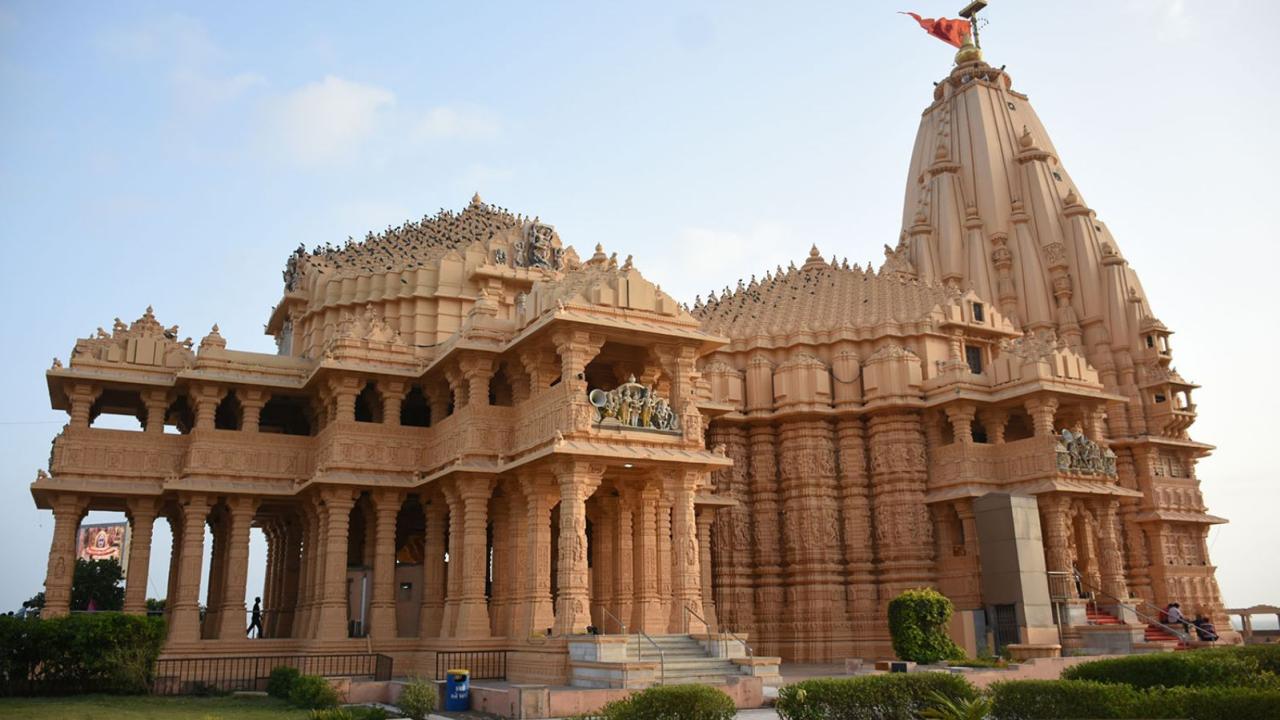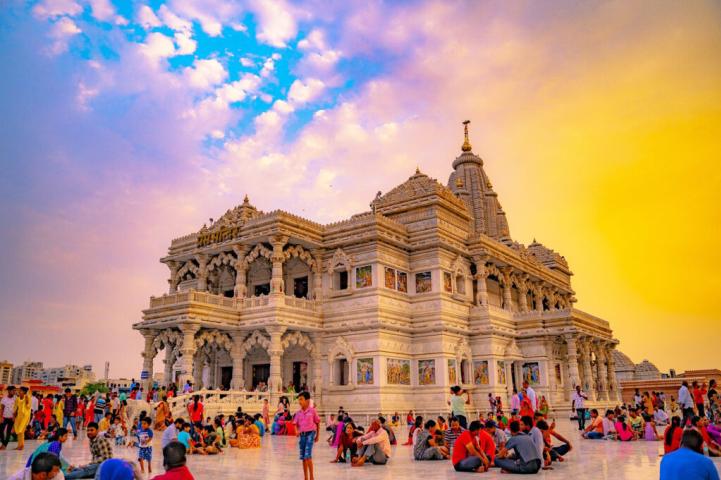The Somnath Temple, one of the most revered shrines in Hindu culture, stands majestically in the town of Prabhas Patan, Gujarat. As one of the twelve Jyotirlingas, this temple dedicated to Lord Shiva holds significant spiritual value and attracts millions of devotees from across the globe.
The Significance of Somnath Temple in Indian Culture
Somnath Temple is not just a place of worship; it represents the resilience of Hindu culture and faith. Known as "The Shrine Eternal," it has withstood invasions and destruction throughout history, only to be rebuilt each time with more strength and devotion.
Historical Overview of Somnath Temple
The history of Somnath Temple is as awe-inspiring as its presence. Believed to have been originally built by the Moon God, Soma, in gold, the temple is said to have undergone several reconstructions—each time in a different material: silver by Ravana, sandalwood by Lord Krishna, and eventually, stone by Bhimadeva.
Destruction and Reconstruction
The temple has faced multiple invasions, particularly by Mahmud of Ghazni, who is infamously known for looting and destroying the temple in the 11th century. Yet, each destruction was followed by a resilient rebuilding, symbolizing the undying spirit of faith.
Architectural Marvel of Somnath Mandir
Somnath Temple is an architectural masterpiece, blending traditional Hindu temple architecture with coastal elegance. Standing on the Arabian Sea's shores, its design pays homage to the deity within and the surrounding landscape.
Design Inspiration and Structure
The temple showcases the Chalukya >
Unique Features of the Temple
One unique feature of the Somnath Mandir is its symbolic flag, which is changed three times daily, representing the temple's continuous commitment to the deity. Additionally, the temple's location—facing the sea—symbolizes a sense of openness to spiritual enlightenment.
The Spiritual Significance of Somnath Mandir
The Somnath Temple stands as a symbol of unwavering devotion and resilience. It plays an essential role in Hinduism, especially in Shiva worship, drawing pilgrims who seek to connect with Lord Shiva's eternal energy.
Role in Hinduism
As a Jyotirlinga, the temple is considered a direct manifestation of Lord Shiva. Each Jyotirlinga, including Somnath, represents different qualities of Shiva, making it an important pilgrimage for those devoted to the deity.
Symbol of Resilience
Throughout history, Somnath Mandir has shown resilience against various forces trying to dismantle it. This has made it a symbol of the unbreakable spirit of Hindu devotion, standing as an example of faith that cannot be erased.
Legends and Mythology Surrounding Somnath Temple
The temple is steeped in legends, with the most notable ones being tied to Lord Shiva and the Moon God. These myths add a mystical allure to the temple, enhancing its status as a sacred site.
Connection to Lord Shiva
The Shiva Linga at Somnath is considered self-manifested or “Swayambhu,” making it inherently powerful. The connection to Lord Shiva symbolizes the strength and infinity of the universe.
The Legend of the Moon God
According to Hindu mythology, the Moon God, Soma, built this temple in gratitude to Lord Shiva, who freed him from a curse. This is why Somnath is sometimes referred to as the "Shrine of Soma," giving the temple its name.
Pilgrimage and Festivals at Somnath Temple
Somnath Temple is a hub of spiritual activity, especially during festivals and pilgrimages, where devotees come to experience the temple’s divine aura.
Maha Shivaratri Celebrations
Maha Shivaratri is one of the most celebrated festivals at Somnath, marked by grand processions, devotional music, and special rituals. Thousands gather here to honor Lord Shiva on this auspicious day.
Annual Pilgrimage and Rituals
The temple sees a steady influx of pilgrims year-round, with special rituals such as Rudrabhishek performed regularly to honor the Shiva Linga. These rituals offer devotees a way to connect deeply with their faith.
Best Time to Visit Somnath Temple
The ideal time to visit Somnath Temple is between October and March, when the weather is cool and pleasant, making it more comfortable for sightseeing and temple visits.
Nearby Attractions and Things to Do
Besides the temple, visitors can explore several nearby attractions that add to the spiritual and scenic appeal of Somnath.
Somnath Beach
Located just a stone’s throw from the temple, Somnath Beach offers a serene environment for relaxation and reflection after a visit to the temple.
Bhalka Tirtha
A revered site, Bhalka Tirtha is believed to be where Lord Krishna took his last breath. This adds another layer of significance to the area, making it a must-visit for devotees.
Triveni Sangam
The confluence of three holy rivers—Hiran, Kapila, and Saraswati—at Triveni Sangam offers a scenic and spiritual experience, considered an auspicious place for performing rituals and paying respects.
Somnath Temple Location and Accessibility
Situated in Gujarat’s Prabhas Patan town, Somnath Temple is accessible by multiple modes of transport, making it easy for devotees and travelers alike.
How to Reach Somnath Mandir
You can reach Somnath by road, rail, and air. The nearest railway station is Veraval, located about 7 kilometers from the temple. For those traveling by air, the closest airport is in Diu, approximately 85 kilometers away.
Local Transportation and Facilities
Auto-rickshaws and taxis are readily available, making it easy to navigate around the temple and nearby attractions. Facilities like accommodations, eateries, and shops are also nearby to accommodate visitors' needs.
Visitor Guidelines and Etiquette
To preserve the sanctity of Somnath Temple, visitors should follow certain guidelines, such as dressing modestly, refraining from photography within the temple premises, and maintaining silence and decorum.
Somnath Temple Trust and Its Role
The Somnath Temple Trust oversees the temple’s maintenance, rituals, and festivals. It ensures the temple is preserved as a place of worship and spiritual refuge for generations to come.
Future Prospects and Conservation Efforts
Efforts to preserve and maintain the temple are ongoing, with the Somnath Trust playing a pivotal role in ensuring this sacred site endures as a beacon of spirituality and resilience.
Conclusion
Somnath Temple stands as an eternal symbol of devotion, resilience, and spirituality. Its history, architecture, and legends make it an awe-inspiring destination for those seeking to connect with India’s rich cultural and spiritual heritage. Visiting Somnath Temple is not just a journey to a place but a journey into the heart of Hinduism’s enduring spirit.
FAQs
What makes Somnath Temple unique among Jyotirlingas?
Somnath is the first among the twelve Jyotirlingas and holds a unique spiritual and historical significance due to its repeated rebuilding.Who manages Somnath Temple today?
The Somnath Temple Trust is responsible for managing the temple’s day-to-day operations, festivals, and preservation.Is photography allowed inside Somnath Temple?
No, photography is strictly prohibited inside the temple to maintain its sanctity.








